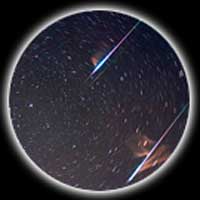
New Moon: During new moon the moon would be between the earth and the sun. It is the exact time when the moon goes from waning to waxing.
This is a time of birth or spring of new life. Hence it is an apt time for you to start any new venture. But it would be a risky situation as you would not be loaded with much information related to the job at hand. Do not make any commitments a t this time because you do not know the outcome. New moon is a good time to make wishes and ideals in life.
First Quarter: This is the phase of the moon when it is perpendicular on the distance from the earth to the Moon. This is the first time after the new moon.
This would be a time for building. Things gain speed or momentum during this phase of the Moon. This is a time for action and not thinking. Conflicts in interests are likely during the first quarter of the Moon which need to be sorted out then and there.
Full Moon: This is the time when the Moon goes from waxing to waning. The Moon would be fully illuminated and the earth would lie between the Sun and the Moon.
Full Moon is the time when your efforts start to bear fruit. This is a good time to open up your information or creativity to the world. All your efforts culminate now.
Last Quarter: This is the time when the Moon is perpendicular on the distance from the earth to the Moon.
This is a time to review your works. An apt time to bring your works to a close. Not a good time to start anything new.
Quadrantids 2015 The Quadrantids are an easily visible January meteor shower. The entire activity period of the Quadrantids runs from January 1 to 5, 2015.
The radiant of this shower is an area inside the constellation Botes. The name comes from Quadrans Muralis, an obsolete constellation that is now part of Botes. It lies between the end of the handle of the Big Dipper and the quadrilateral of stars marking the head of the constellation Draco.
Peak of Quadrantid meteor shower 2015 The maximum of the Quadrantid activity in 2015 is expected during the night of the 3rd January 2015. The Quadrantids are an easily visible January meteor shower.
Peak of Perseid meteor shower 2015 The maximum of the Perseid activity in 2015 is expected during the night of the 12th August 2015. The Perseids is the name of a prolific meteor shower. The shower is visible from mid-July each year, with the peak in activity being between August 9 and 14, depending on the particular location of the stream.
Leonids 2015 The Leonids are a meteor shower associated with the comet Tempel-Tuttle, which is visible between the 14th and 21st of November 2015. The Leonids get their name from the location of their radiant in the constellation Leo: the meteors appear to radiate from that point in the sky. The Leonids tend to peak in November.
Peak of Leonid meteor shower 2015 The maximum of the Leonid activity in 2015 is expected during the night of the 17th November 2015. The Leonids are a prolific meteor shower. It tends to peak around November 17, but some are spread through several days on either side and the specific peak changing every year.